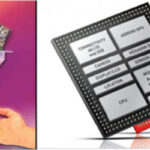 Ambiq introduces an expanded Apollo4 SoC portfolio, including the latest Apollo4 Plus and Apollo4 Blue Plus with Bluetooth Low Energy connectivity with enhanced graphics display capabilities and more robust security features to better protect power-constrained IoT endpoint devices without compromising power efficiency.
Ambiq introduces an expanded Apollo4 SoC portfolio, including the latest Apollo4 Plus and Apollo4 Blue Plus with Bluetooth Low Energy connectivity with enhanced graphics display capabilities and more robust security features to better protect power-constrained IoT endpoint devices without compromising power efficiency.
The wearables market, including smartwatches, smart bands, and smart glasses, together will generate more than $350 billion in cumulative revenues over the next five years¹. The role of wearables is evolving to become essential in medical, wellness, and fitness applications, where user experience, safety, and security are key factors in their purchasing decisions.
The Apollo4 Plus is the 4th generation system processor solution built upon Ambiq’s proprietary Subthreshold Power-Optimized Technology (SPOT) platform, enabling new features while reducing devices’ overall system power consumption to extend their battery life. Embedded with our megabytes of MRAM, SRAM, ultra-low power processors, solid software stacks, and up to 192 MHz operating frequency with TurboSPOT, the latest SoC to the Apollo4 family empowers more AI-capable operations, including data ingestion, pre-processing, inference, and actuation. Equipped with an ultra-low-power, end-to-end audio subsystem, the Apollo4 is designed to run compute complex algorithms required for precise voice recognition and higher fidelity voice capability needed for voice calls. Its powerful, integrated GPU and display controller, coupled with fast and efficient memory access, offer manufacturers the ability to differentiate their products with bigger and richer display user interfaces with vivid colors, high-resolution and smooth graphics. Ambiq’s Secure by Design features allow OEMs to secure their products from the ground up when implementing SecureSPOT with tools to implement end-to-end security from the start.
The latest addition to the Apollo4 family provides enhanced graphics display and greater voice capabilities to serve as either an application processor or a coprocessor for battery-powered endpoint devices. The Apollo4 Plus is now in mass production, targeting smartwatches and smart bands, consumer medical devices, motion and tracking units, and the smart home of the 21st century.





Leave a Reply